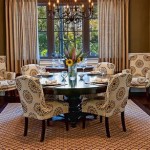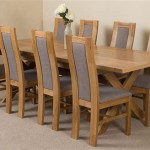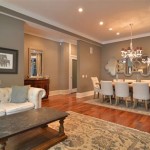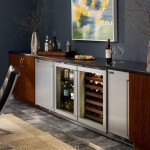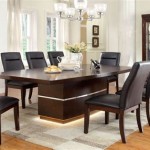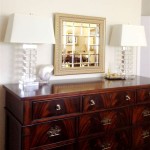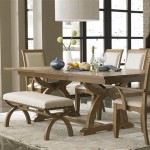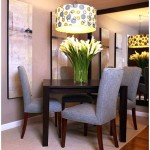Pictures of Formal Dining Rooms: Exploring Design and Functionality
Formal dining rooms represent a dedication to tradition and a commitment to creating a refined ambiance for meals. Visual examples, or pictures, of formal dining rooms offer a rich source of inspiration for homeowners, interior designers, and anyone seeking to understand the nuances of this specific type of space. These visuals showcase a diverse range of styles, from classic to contemporary interpretations, highlighting the important elements that contribute to a truly elegant and functional formal dining area.
The term "formal dining room" typically refers to a dedicated space within a residence specifically designed and used for hosting more elaborate meals, often for special occasions, holidays, or gatherings with guests. This distinguishes it from everyday dining spaces like breakfast nooks or kitchen islands, which are generally more casual in nature. Formal dining rooms are characterized by attention to detail, incorporating higher-end furnishings, carefully considered lighting, and often featuring decorative elements that enhance the overall aesthetic. The selection of materials, the color palette, and the spatial arrangement are all carefully orchestrated to create an atmosphere of sophistication and grace.
Pictures of formal dining rooms provide a valuable resource for understanding the current trends and established principles of design in this area. By analyzing these images, one can glean insights into furniture selection, lighting strategies, color schemes, and decorative accents that contribute to the creation of a successful and visually appealing formal dining space. Analyzing existing designs helps with forming a more informed approach to decorating or renovating a formal dining room.
The Importance of Furniture Selection in Formal Dining Rooms
The centerpiece of any formal dining room is undoubtedly the dining table. Pictures consistently illustrate the importance of choosing a table that is appropriately sized for the room and the number of guests typically entertained. Common shapes include rectangular, oval, and round tables, each offering a distinct aesthetic and influencing the flow of movement within the space. Rectangular tables are well-suited for larger gatherings and can create a sense of formality and grandeur. Oval tables offer a softer, more intimate feel while still accommodating a significant number of diners. Round tables promote conversation and can be particularly effective in smaller, more square-shaped rooms.
The material of the dining table also plays a crucial role in defining the room's character. Wood, particularly hardwoods like mahogany, walnut, and cherry, is a classic choice that exudes warmth, elegance, and durability. Glass-topped tables can create a more modern and airy feel, while marble or stone tables offer a sense of luxury and sophistication. Pictures showcase a variety of table finishes, from high-gloss lacquers to matte stains, each contributing to a different overall aesthetic.
Dining chairs are another critical element in the furniture selection process. They should be comfortable, stylish, and complement the design of the table. Upholstered chairs, often adorned with luxurious fabrics like velvet, silk, or linen, are a common choice for formal dining rooms, providing both comfort and visual appeal. The chair backs can be high or low, depending on the desired level of formality. Armchairs are typically placed at the head of the table, signifying status and creating a more visually balanced arrangement. Pictures reveal the diverse range of chair styles available, from classic Chippendale and Queen Anne designs to more contemporary and minimalist options.
Beyond the table and chairs, other furniture pieces can enhance the functionality and aesthetic of a formal dining room. Sideboards or buffets provide storage for serving dishes, silverware, and linens, while also serving as a display surface for decorative items. China cabinets or display cases can showcase fine china and glassware, adding a touch of elegance and personality to the space. A well-placed rug can anchor the dining area and add warmth and texture to the room. The selection of furniture should be cohesive, reflecting a unified design vision and contributing to the overall feeling of formality and sophistication.
Lighting Strategies for Creating Ambiance
Lighting is a critical element in creating the right atmosphere in a formal dining room. Pictures frequently demonstrate the importance of layering light sources to achieve a balanced and inviting ambiance. A central chandelier is often the focal point of the room, providing both illumination and a decorative accent. Chandeliers come in a wide variety of styles, from traditional crystal chandeliers to more modern and sculptural designs. The size and style of the chandelier should be appropriate for the scale of the room and complement the overall design aesthetic. The light source should be directed to the area below the table to best distribute it evenly.
In addition to the chandelier, supplemental lighting sources are essential for creating depth and visual interest. Sconces mounted on the walls can provide ambient lighting and highlight architectural details. Table lamps placed on sideboards or buffets can add a warm and inviting glow. Dimmable lighting controls are highly recommended, allowing for the adjustment of light levels to suit different occasions and create the desired mood. During dinner the lightning should be softened.
Natural light should also be considered when designing a formal dining room. Pictures often showcase rooms with large windows or French doors that allow ample daylight to enter the space. Window treatments, such as curtains or blinds, can be used to control the amount of natural light and provide privacy. Sheer curtains can filter the sunlight, creating a soft and diffused glow, while heavier drapes can block out light entirely, allowing for a more intimate and dramatic atmosphere. Choosing transparent fabrics for drapery can reduce glare and provide lighting with a more natural color to better simulate that of the sun.
The choice of light bulbs is another important consideration. Warm white light bulbs create a cozy and inviting atmosphere, while cool white light bulbs provide a brighter and more energizing light. LED bulbs are a popular choice due to their energy efficiency and long lifespan. The color temperature of the light bulbs should be consistent throughout the room to create a unified and harmonious lighting scheme. Pictures of formal dining rooms often highlight the use of strategically placed accent lighting to showcase artwork, decorative objects, or architectural features, adding depth and visual interest to the space.
Color Palettes and Decorative Accents in Formal Dining Rooms
The color palette of a formal dining room should be carefully considered to create the desired mood and atmosphere. Pictures illustrate the use of a wide range of color schemes, from classic and traditional to more modern and contemporary. Neutral colors, such as beige, cream, and gray, are often used as a base, providing a sophisticated and versatile backdrop for furniture and accessories. These neutral tones can be accented with pops of color, such as jewel tones, metallics, or vibrant hues, to add visual interest and personality. Darker color schemes, such as deep blues, greens, or burgundies, can create a more dramatic and intimate atmosphere, while lighter color schemes, such as pastels or soft neutrals, can create a more airy and inviting space.
The choice of materials and textures also plays a significant role in defining the overall aesthetic of a formal dining room. Pictures demonstrate the use of luxurious fabrics, such as velvet, silk, and linen, to add texture and visual interest to upholstered furniture and window treatments. Wallcoverings, such as wallpaper or textured paint, can also enhance the tactile quality of the space. The use of metallic accents, such as gold or silver, can add a touch of glamour and sophistication. A great touch is the implementation of faux wood grain on a surface with a similar underlying composition, such as plastic flooring.
Decorative accents are essential for adding personality and character to a formal dining room. Artwork, such as paintings, sculptures, or prints, can add visual interest and create a focal point. Mirrors can reflect light and create the illusion of more space. Flower arrangements can add a touch of natural beauty and freshness to the room. Candles and decorative objects can create a warm and inviting atmosphere. The selection of decorative accents should be carefully curated to complement the overall design aesthetic and reflect the homeowner's personal style.
Table settings are also an important element in the overall design of a formal dining room. Pictures often showcase elaborate table settings with fine china, silverware, crystal glassware, and elegant linens. The table setting should be appropriate for the occasion and reflect the level of formality of the dining experience. The careful arrangement of the tableware, glassware, and napkins can enhance the overall aesthetic and create a sense of occasion. The presence of an eye-catching centerpiece can enhance the presentation of the food and make the meal more memorable.
Analyzing pictures of formal dining rooms provides a wealth of information and inspiration for those seeking to create a sophisticated and functional space. By carefully considering the furniture selection, lighting strategies, color palettes, and decorative accents, it is possible to create a formal dining room that is both elegant and inviting, providing a perfect setting for memorable meals and gatherings.

10 Formal Dining Room Ideas From Top Designers

Formal Dining Rooms Trending Design Features

Formal Dining Rooms Trending Design Features

Formal Dining Rooms Trending Design Features

Formal Dining Rooms Trending Design Features

Dining Room Trends 2025 17 Elements For A Modern Space

Dining Room Trends 2025 17 Elements For A Modern Space

Dining Room Trends 2025 17 Elements For A Modern Space

95 Sophisticated Dining Rooms Designers Love

Formal Dining Rooms Trending Design Features

